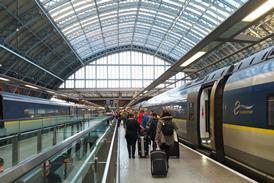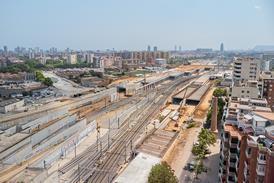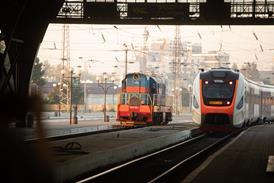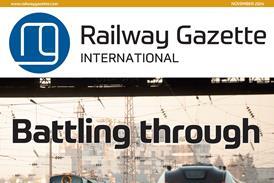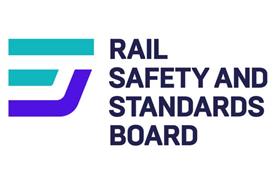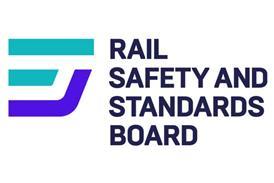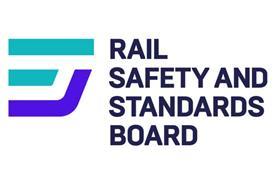INTRO: Swaziland Railways has launched a network-wide upgrading programme, and with private investors is planning a direct link to Johannesburg. James Hall discussed developments with CEO Gideon Mahlalela
AT THE BEGINNING of this year, Swaziland Railways was looking forward to starting the first major rehabilitation of its infrastructure since the country’s rail network opened in 1964. Negotiations with the Italian government had confirmed a low-interest loan of R87m to fund refurbishment of the 301 route-km that thread their way through the tiny southern African nation (RG 4.99 p200).
But then Swaziland was struck by the same summer cyclone storm system that devastated neighbouring Mozambique. Rehabilitation plans gave way to emergency reconstruction measures as the damage was assessed. In the eastern part of the kingdom, stretches of rail were left suspended in the air after embankments were washed away by flood waters. Other sections were submerged when dams disintegrated and rivers burst their banks. Not until the repair work was finished in July could attention return to renovation and expansion.
Over 90% of SR’s business is freight. Its biggest customer is the sugar industry, but half of this export traffic travels just 13 km on the national network before crossing the Mozambique border en route to the port of Maputo.
Critical to the future of rail freight is the Matsapha Industrial Park, which brought the first real industry and multi-national corporations to Swaziland. This was developed alongside SR’s Maputo line in the 1960s. In 1993 the railway opened an Inland Clearance Depot, also known as the Matsapha Dry Port, where containerised goods are loaded for export. Most traffic uses the north-south line to Durban, 26h away by rail.
Maximum train length in Swaziland is 40 wagons, but trains of this length must be split in two when they arrive in Matsapha. The number of containers loaded at the terminal has been growing at 25% a year since opening, but 1999 saw this rate fall to 10%, which SR’s Controller of Property, Zakhele Lukhele, suggests is signalling that the facility has reached saturation point.
A 1998 study reported the company’s goal of handling 80% of traffic to and from Matsapha would not be achievable without expansion. A grant was obtained from Taiwan to fund rehabilitation of the terminal, and the first phase of this work was completed in June.
Freight expansion
Reflecting the success of the Matsapha zone in attracting multinational industries and foreign investment into the kingdom, the Swazi government is planning to launch a smaller second zone around 70 km to the east in sparsely populated low veld country near Hlane - Swaziland’s largest game park.
An ambitious transportation hub, dubbed by Prime Minister Sibusiso Dlamini as the Millennium Project, will see the construction of the second largest regional airport after Johannesburg International adjacent to SR’s Mpaka station, which will be expanded. This will also be the site of the nation’s second dry port, serving a new industrial park for which tender bids are currently being considered by the government.
The industrial parks are also driving plans for a new rail link between Swaziland and South Africa. A century ago, South African President Paul Kruger sought to annex Swaziland to secure a direct rail route from Johannesburg to the Indian Ocean. Now the route he coveted is targeted for development by SR in conjunction with South African partners.
The Swazi rail system had its origins in a line built to transport iron ore from a now-defunct mine at Ngwenya to Maputo. Ngwenya is close to the South African border, and an extension to connect the line with Gauteng will slice 200 km off the rail distance from Johannesburg to Matsapha, avoiding the circuitous route via Komatipoort.
The link offers a significant saving in transport costs, in particular for cement, a costly commodity in Swaziland at present because of the high cost of haulage from South African manufacturers.
Mixed passenger fortunes
Passenger services have never been prominent in Swaziland, and low ridership led to the discontinuation of Spoornet’s twice-weekly Trans-Lubombo between Durban, Mpaka and Maputo with effect from January 30.
But Gideon Mahlalela, the company’s affable CEO, has worked to introduce luxury tourist trains that bring wealthy visitors into the kingdom. Originating in South Africa, the trains wend their way through Swaziland’s game parks and famous scenery before heading for the ocean at Durban or Maputo.
’On some stretches of track, traffic is so light that we encourage passengers to stop the train if they wish to photograph a herd of zebra or a family of giraffe they spot along the way’, says Mahlalela. ’This has always been the secret desire of rail riders, to be able to command their train to stop.’
Operations Director Stevenson Ngubane says two charter trains are regularly hired by private firms. The Shongololo Southern Cross operates between Swaziland and Mozambique every two weeks, and the Shongololo Good Hope makes the Swaziland to Durban run every six weeks.
SR’s steam locomotives were sold for scrap in the mid-1990, but Mahlalela held onto one, to form ’the centrepiece for a transport museum we plan to build at Mpaka.’ It is likely to prove another draw for the tourists.
CAPTION: A Funkey-built diesel shunter at work in the Matsapha Dry Port rail terminal
CAPTION: Freight forms the bulk of SR traffic, with regular north-south container trains between Matsapha and the South African port of Durban

